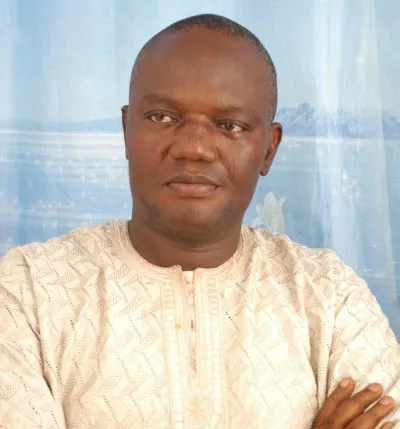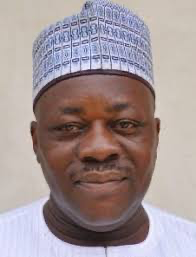A case for Nuclear Energy in Nigeria, By Obiechina Obba
The most popular peaceful use of nuclear energy is arguably, in electricity generation.
Nigeria requires 25,000 to 30,000 mw of electricity for any meaningful economic development.
Total output has been about 3,700 mw from total grid capacity of 10,000 mw. The average national output has been between 4,000 and 6,000 mw.
About 67% of total electricity demand is met by self-generation; accounting for 22% of total capital cost for industries.
The Energy Commission of Nigeria, ECN, puts the cost of such self-generated electricity at 19.05 naira/kwh as against 7.86 naira/kwh as generated by the gas-fired plants.
Energy is therefore said to be one of the most expensive inputs in Nigerian factories.
This has consequences: The most significant of which is that production cost rises and exports suffer; you therefore tend to produce below capacity and employ fewer people.
In South Africa, with less than half Nigeria’s population, her two nuclear reactors generate 5% of her 40,000 mw.
Seventy-seven per cent of electric power plants in Nigeria use fossil fuels. These fuels are not inexhaustible. An Inter-Ministerial Committee on Power Generation estimates the reserve of oil at 34 billion barrels and gas at 4,293 billion cubic metres.
Africa has 8% of world Uranium reserves, Australia – 35%, Russia and other USSR Republics – 29%, Canada – 13%. Actual production is: Canada – 33%, Australia – 15%, Nigeria – 10%.
This endowment in Uranium is a good point for those making a case for Nigeria to go nuclear and diversify her energy mix.
Nuclear electricity also causes less green gas pollution. Forty million kilowatt-hour (kw/h) of electricity can be produced from one tonne of natural Uranium compared to 16,000 tonnes of coal and 80,000 barrels of oil burnt for the same output.
Carbon Dioxide emission in generating one kw/h of electricity is one kilogram for coal, 0.5 kg for gas and only 10 grams for nuclear power.
The challenges of global warming are fast making nuclear and renewable energy sources more attractive. In the Kyoto Protocol, it was planned that Carbon Dioxide emissions will be reduced by 60% by 2050.
Can the world keep global temperatures from rising above 2°C and pursue efforts to limit it to 1.5°C above pre-industrial levels as in the Paris Agreement of 2015?
So, even countries with huge oil deposits like Egypt, UAE, Venezuela, Libya, Iran and Saudi Arabia are into nuclear electricity; diversifying their energy mix and getting more eco-friendly. Nigeria being the biggest producer of crude oil in Africa should not be an exception.
While a nuclear power plant can work steadily, non-stop, for 50 years, a fossil fuel-fired plant must be shut every year, or so, for maintenance.
Some renewable sources like solar and wind, while environmentally-friendly, generate very little and depend on the vagaries of the weather.
The Federal Government of Nigeria, with the support of the United Nations International Atomic Energy Agency, IAEA, is currently pursuing a nuclear electricity programme.
The lead agency is the Nigeria Atomic Energy Commission, NAEC. The local approving agency is the Nigerian Nuclear Regulatory Authority, NNRA.
A Nuclear Power Plant (NPP) applies heat from a controlled nuclear chain reaction – in the Core of its reactor – to produce steam which drives its turbine and generates electricity.
The government of Nigeria approved a nuclear framework for the country to generate electricity from nuclear energy for national development under President Olusegun Obasanjo in 2007.
This involves:
Manpower development which is ongoing in energy centres in Zaria, Ile-Ife and some universities as well as in the National Institute of Radiation Protection and Research in the University of Ibadan offering Masters degree and Postgraduate diploma in radiation protection; Then
Site selection, Design, Approval and Licensing; and finally,
Construction, Operation and de-commissioning.
The Siting stage involves 13 criteria ranging from availability of a natural body of water; seismicity, especially how volcano or earthquake-prone the site is; distance to densely populated area; wind direction etc. Nigeria is at this stage and has two candidate sites, awaiting final approval, for a possible first nuclear power plant for electricity generation.
The International Atomic Energy Agency, IAEA, in 2009, certified Nigeria to have passed the minimum manpower threshold to start a nuclear power plant programme for electricity generation. However, there are still the design, construction, commissioning stages with all the approvals to go with them.
The focal agency, the Nigeria Atomic Energy Commission, NAEC, was created by Act 46 in 1976 which was later amended in 2004.
NAEC however, became fully operational in July, 2006 with Dr Erepamo Osaisai as its pioneer Chief Executive.
Its function as operator is to promote the peaceful use of atomic energy in Nigeria (Nigeria is one of the first countries to sign the Nuclear Non-Proliferation Treaty in 1968).
In March 2011, NAEC was re-constituted and even made more independent with Dr Erepamo Osaisai as Executive Chairman and it vigorously started pursuing the nuclear electricity programme.
The Nigerian Minister of Science, Technology and Innovation, Dr Adeleke Mamora, in the International Ministerial Conference on Nuclear Power in the 21st Century in Washington DC, US, on 6 November, 2022 supported the nation’s quest to diversify her energy mix by using nuclear electricity.
He regretted that only South Africa is using nuclear electricity in the continent and Nigeria has taken a decision to fully explore and harness nuclear energy for the generation of electricity which will contribute to the country’s energy security.
The former Nigerian Minister of Science and Technology (2015 – 2022), Dr Ogbonnaya Onu, in an interview with the News Agency of Nigeria, NAN, on 21 October, 2006 said Nigeria is working with the Russian State Nuclear Corporation, Rosatom, towards achieving a nuclear electricity goal.
Again, while declaring open the Nigeria Energy Calculator 2050 Stakeholders Engagement in Abuja on 22 April, 2021 he defended the decision, saying nuclear energy will stabilise power supply in the country. The stakeholders engagement is a planning model to offer choices in energy development which are examined alongside their environmental consequences.
Electricity supply is a big issue in Nigeria.
A World Bank report in 2021 says 78% of electricity consumers in Nigeria get less than 12 hours of power every day. The Nigerian Electricity Regulatory Commission however, puts the figure at 55%.
Whichever way, nuclear electricity appears a tempting option for Nigeria. Those opposed to it keep remembering the worst accident in a nuclear plant used to generate electricity in the world. That accident was the fire in Chernobyl Nuclear Power station, a Light Water Graphite reactor on April 26, 1986 in which about 30 people died, 300 suffered radiation sickness and another 3,000 developed Thyroid cancer, a mild form of cancer.
The other accidents were in Tokai-Mura in Japan in 1999, Core Meltdown at the Three Mile Island in U. S. in 1979, and the first of such accidents in the world in Windscale, U. K., from an early Plutonium Production reactor in 1957.
Then, the more recent incident in Fukushima, Japan, on 11 March, 2011. These are the only accidents since the first commercial nuclear plant for electricity generation in Obninsk, Russia, on June 26, 1954.
Since then, safety standards have improved. Both Chernobyl and the Tokai-Mura plants were Light Water Graphite reactors which are not being produced again as well as the reactor in Windscale, UK.
The tsunami in Fukushima drowned and killed 15,893 people, but no one died from radiation. Two plant workers suffered some radiation burns and another 37 suffered physical injuries.
The World Health Organisation in 2014, said there was no increase in miscarriages, still births or physical and mental disorders in babies born after the accident.
Up till today, more people die in mining, oil exploration and dam accidents to power other sources of electricity than in nuclear incidents in the world.
The burst/failure in Banqiao Reservoir Dam on the Yellow River in China in 1975 killed 171,000 people.
On the average 15,000 miners are killed every year.
On 28 April, 1942, 1,549 lives were lost in the colliery accident in Benxi, China.
In the US, 362 miners were killed in the underground mine explosion in Monongah, West Virginia, on 6 December, 1907.
In the recent incident in Fukushima, Japan, when higher than normal radiation leaked out, science and technology did not fail. Nuclear Power Plants in Japan, as in U. S., are built on earthquake-proof technology as is required by law in quake-prone zones.
The plants automatically shut down when the quake occurred and suffered no damage. Stand-by electric generators came on to power the water pumps cooling the system to remove residual heat. However, the tsunami that followed submerged the electric generators. As a result, they could not power the water pumps and this led to partial meltdown of the reactor core and minor radiation leaks.
There is always a lesson to be learnt as a people in quest of rapid economic growth and development face tough options in search of energy to power their aspirations.
The best choice, as history has shown, is to minimize the risks while aiming very high without forgetting, of course, to leave a better world for children.
This choice, it appears, gives safe nuclear option an edge over all other sources of energy.
Obiechina Obba, a science journalist, writes from Abuja.




